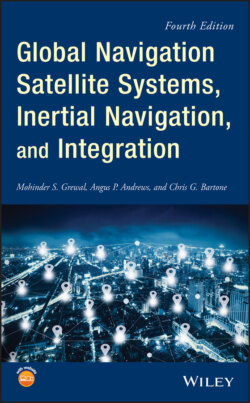Читать книгу Global Navigation Satellite Systems, Inertial Navigation, and Integration - Mohinder S. Grewal - Страница 48
1.4 GNSS/INS Integration Overview 1.4.1 The Role of Kalman Filtering
ОглавлениеThe Kalman filter has been called “navigation's integration workhorse,” [30] for the essential role it has played in navigation, and especially for integrating different navigation modes. Ever since its introduction in 1960 [31], the Kalman filter has played a major role in the design and implementation of most new navigation systems, as a statistically optimal method for estimating position using noisy measurements. Because the filter also produces an estimate of its own accuracy, it has also become an essential part of a methodology for the optimal design of navigation systems. The Kalman filter has been essential for the design and implementation of every GNSS.
Using the Kalman filter, navigation systems designers have been able to exploit a powerful synergism between GNSSs and INSs, which is possible because they have very complementary error characteristics:
Short‐term position errors from the INS are relatively small, but they degrade significantly over time.
GNSS position accuracies, on the other hand, are not as good over the short term, but they do not degrade with time.
The Kalman filter takes advantage of these characteristics to provide a common, integrated navigation implementation with performance superior to that of either subsystem (GNSS or INS). By using statistical information about the errors in both systems, it is able to combine a system with tens of meters position uncertainty (GNSS) with another system whose position uncertainty degrades at kilometers per hour (INS) and achieve bounded position uncertainties in the order of centimeters (with differential GNSS) to meters.
